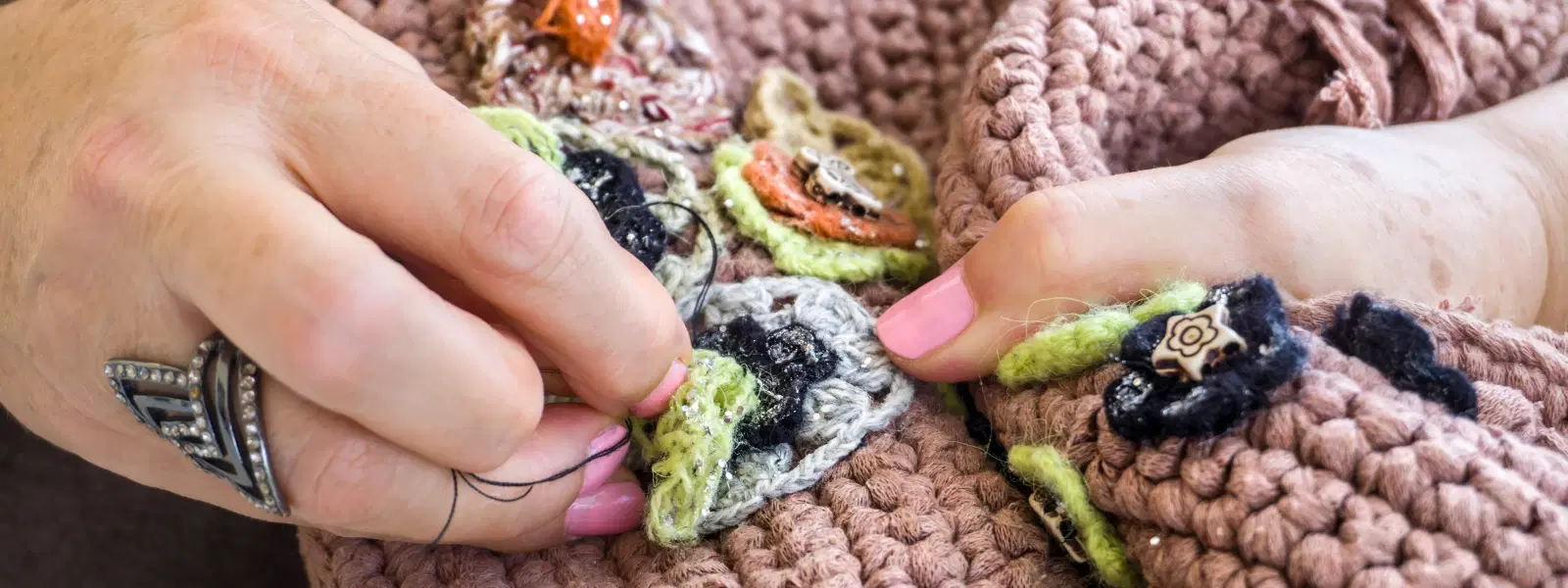
Hotels
•04 min read

Phulkari embroidery is a vibrant and intricate textile art that captures the very soul of Punjab's cultural heritage. Often seen dazzling in weddings, festivals, and everyday celebrations, this traditional Punjabi embroidery exudes a sense of liveliness and grace that transforms simple fabrics into works of art. Passed down through generations, Phulkari is not only a craft but a storytelling medium, reflecting the rich folk traditions and textile heritage of Punjab. This blog post dives into the frequently asked questions about Phulkari embroidery, exploring its history, techniques, and unique patterns, while offering insight into its cultural significance.
Phulkari, which translates to "flower work," is known for its floral and geometrical designs created with silken threads on handwoven fabrics. Rooted deeply in Punjab folk art, this form of embroidery is a beautiful representation of Punjabi cultural textiles. The delicate interplay of thread and fabric creates motifs that celebrate nature, love, and traditional customs, making each piece a vibrant narrative of history and emotion.
One of the defining features of Phulkari embroidery is its use of vibrant, eye-catching colors. The designs, often rendered on khaddar fabric, showcase intricate patterns that have been perfected over centuries. Whether in the form of elegant shawls, striking dupattas, or pieces meant for bridal trousseaus, the versatility of Phulkari is undeniable. Each creation is a testament to the exceptional skill and artistic vision inherent in Punjabi textile heritage.
The art of Phulkari embroidery traces its roots back to the heart of rural Punjab, where it was lovingly crafted by women for personal adornment and special occasions. Traditionally, these embroidered pieces were part of daily attire and festive celebrations, with designs evolving from the daily lives and stories of rural communities. Folktales and epic love stories such as Heer Ranjha often feature references to this fabric art, symbolizing beauty, romance, and cultural pride.
In addition to being a craft, Phulkari has served as a symbol of empowerment for rural women. It provided them with not just a creative outlet but also a means to assert their presence in a traditionally dominated cultural space. Over time, its exquisite craftsmanship and historical importance garnered recognition, leading to efforts to revive and preserve this art, including its designation as a Geographical Indication (GI) product. This status underlines its integral role in representing Punjabi identity and heritage.

As with many traditional art forms, Phulkari embroidery boasts a variety of styles, each with its own distinct character. Among these, Bagh, Chope, Suber, and Tilpatra designs are notable. Bagh, for instance, is known for its garden-like patterns full of life and color, whereas Chope often graces the borders of ceremonial fabrics. These variations not only display the rich diversity of regional embroidery styles within Punjab but also highlight how different communities have tailored the art to meet diverse aesthetic and functional needs.
The intricate process behind Phulkari embroidery requires immense skill and patience. Artisans rely on traditional techniques such as the darning stitch, which creates an embellished effect on the reverse side of the fabric. The handwoven nature of these designs means that much of the work is done entirely by hand. The technique involves carefully layering and aligning the silken threads to bring out patterns that are both symmetrical and fluid, demonstrating a perfect blend of artistic talent and technical expertise.
Today, Phulkari embroidery has transcended its traditional boundaries to find a place in modern fashion and décor. Designers are increasingly incorporating handwoven Phulkari designs into garments, accessories, and even home décor items. This enduring art form resonates with a global audience as a celebrated facet of Indian embroidery techniques. The traditional motifs, though updated to suit modern tastes, continue to reaffirm their heritage and appeal in new and innovative ways.
Recognizing its cultural and historical value, numerous efforts have been initiated to preserve Phulkari embroidery. Workshops, exhibitions, and designer collaborations are bridging the gap between tradition and modernity, ensuring that this textile art continues to evolve. The revival of Phulkari is not just a nod to its past but also an invitation for new generations to explore and cherish the craftsmanship that Bhutan’s artisans have honed over time. The passion and commitment of these artisans remind us that every stitch carries a piece of Punjab's legacy.

Did you know? Phulkari embroidery is not just an art form but a storytelling medium, with motifs often depicting rural life, folklore, and nature. Each stitch carries the legacy of Punjab's vibrant culture and traditions.
Phulkari embroidery is a traditional textile art of Punjab characterized by intricate floral and geometrical patterns created with silken threads on handwoven khaddar fabric.
The traditional embroidery textile art of Punjab is Phulkari, which translates to "flower work" and is known for its vibrant colors and cultural significance.
Phulkari art originated in rural Punjab and has been crafted by women for centuries. It holds cultural significance as a symbol of empowerment and is often associated with Punjabi folklore and traditions.
Khaddar, a handwoven cotton fabric, is famous in Punjab and serves as the base material for Phulkari embroidery.
Phulkari embroidery is more than just a textile art; it is a celebration of Punjab's rich cultural heritage and traditions. From its humble beginnings in rural households to its modern-day revival in contemporary fashion and décor, the art of Phulkari continues to captivate and inspire. By understanding its history, techniques, and diverse patterns, readers are invited to appreciate the timeless beauty and cultural significance of this Punjabi folk art. The intricate details and enduring legacy of Phulkari remind us that every thread weaves a story of passion, resilience, and cultural pride.